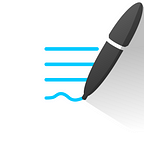Outline Notes: How To Use This Method For Better Note-Taking
The outline method is perhaps one of the most common, but still one of the best note-taking methods. Probably, you have been using it before, maybe without even knowing it had a name.
Nevertheless, it doesn‘t hurt to add another essential method to your skill set that allows to take great notes in school and college or even in meetings. With this method, your notes and thoughts are organized in a structured and highly logical manner, which drastically reduces the editing and reviewing time. No wonder that Oxford Learning rates the method as best for “Easily creating study questions for review“ [1].
How it works
Naturally, people use bullet points, numbered lists, or arrows to indicate a new thought. Every major topic of the lecture or meeting will be placed farthest to the left of the page. Subtopics will be added using an indent to the right. Each supporting fact or note is placed below the subtopic, using another indent. This way, the notes add a great structure to the whole lecture or meeting making it easy to review them after.
Advantages
As stated above, the outline method reduces the time needed to edit and review notes which is useful if you need to digest a lot of information in a short time. It does not only show the main points of the lecture or meeting but also shows the relationship between the single items. Since it follows a relatively strict framework this method allows you to focus on your lecture instead of needing to spend to much time getting your notes right.
Disadvantages
Where there is light, there is also shadow. The outline note-taking method has its disadvantages: For classes that require you to write a lot of formulas and graphs like math or chemistry, other note-taking systems like Cornell notes are superior.
Why you should write notes longhand
Sure, at first the outline method might appear ideal for using a computer with any word processing program, but we still recommend writing your notes longhand. Science has proven that you‘re able to remember handwritten notes a lot better compared to typed notes and there are a few more general reasons why handwriting is superior.
One of the biggest advantages of the outline method is that it is easy to review the notes. When you write them down by hand and review them, it is much more flexible. You can draw arrows and lines connecting thoughts from different subtopics and add comments to the side. If you want to take your handwritten notes on an iPad, apps like GoodNotes offer a few more benefits. For example, you can reorder written words on the page after you have written them down. This way, a subtopic can become a main topic if you have identified a higher importance during the review.
Thanks to its ease of use and benefits, the outline method is ideal to ensure educational success.
Our app GoodNotes 4 is an outstanding note-taking app for the iPad. It is the perfect app to use with the Apple Pencil but it supports a lot of other styluses. It‘s minimalistic and distraction-free design lets you focus on your lectures or meetings. GoodNotes lets you search your handwritten notes, which is ideal for reviewing them. It is available on the App Store.
Other recommended note-taking methods:
[1] https://www.oxfordlearning.com/5-effective-note-taking-methods/
